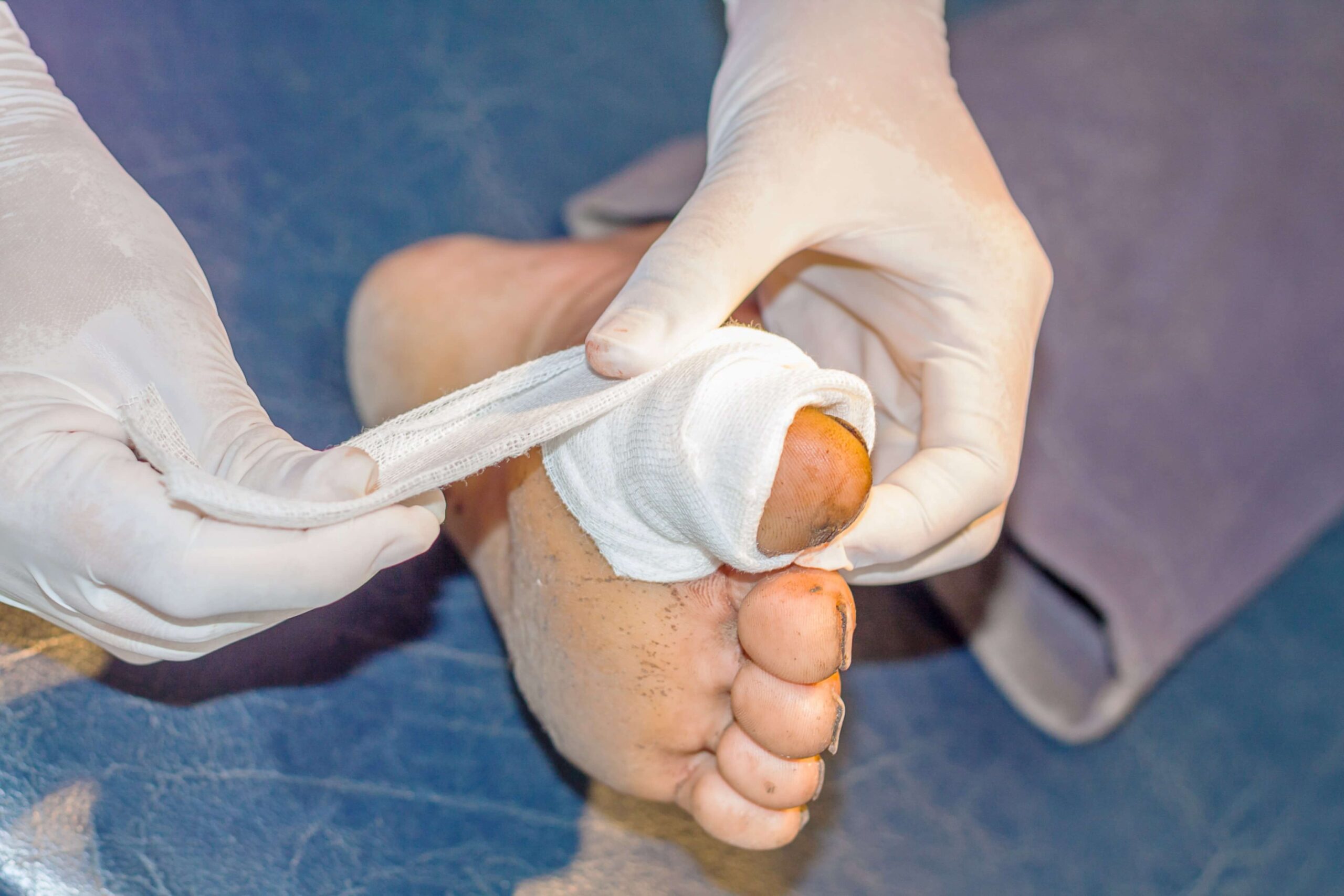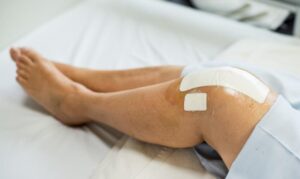Non-healing foot wounds are a common and serious complication for individuals with diabetes. These wounds can lead to infections, further complications, and even amputations if not properly treated. Orthopedic treatment plays a pivotal role in managing these wounds by addressing infection, promoting tissue healing, and improving mobility. In this blog, we’ll explore how orthopedic care can make a difference for diabetic patients suffering from non-healing foot wounds.
What Are Non-Healing Foot Wounds in Diabetes?
Non-healing foot wounds, also known as diabetic foot ulcers, are open sores or wounds that develop on the feet of individuals with diabetes. These wounds often fail to heal due to poor circulation, nerve damage (neuropathy), and compromised immune function — all common issues in people with diabetes. The lower extremities are most affected, and these wounds can cause significant pain and discomfort, potentially leading to serious infections if not properly managed.
In some cases, these wounds fail to heal despite standard wound care due to underlying complications associated with diabetes. Non-healing foot wounds often appear as ulcers, blisters, or cracks in the skin, particularly on the soles, heels, or toes.
Why Are Non-Healing Foot Wounds Common in Diabetic Patients?
Diabetes has a significant impact on foot health. The disease affects both circulation and nerve function. High blood sugar levels cause blood vessels to narrow, reducing blood flow to the extremities. This lack of circulation prevents the body from delivering necessary oxygen and nutrients to the affected areas, making wound healing difficult.
Additionally, diabetic neuropathy — nerve damage caused by prolonged high blood sugar — can numb the feet, making individuals unaware of injuries or developing ulcers. Without proper awareness, these wounds are more likely to become infected and fail to heal.
As a result, diabetic patients are at a higher risk of developing non-healing foot wounds, and if left untreated, these conditions can lead to severe complications like infections, gangrene, or even amputations.
The Role of Orthopedic Treatment in Non-Healing Foot Wounds
Orthopedic treatment is essential in managing non-healing foot wounds in diabetic patients. A comprehensive orthopedic approach helps to prevent infection, promote tissue preservation, and restore mobility. Here’s how orthopedic care contributes to healing:
- Infection Management: A critical part of treating diabetic foot ulcers is managing infections. Orthopedic specialists use advanced therapies and wound care products to control bacteria, prevent the spread of infection, and ensure the healing environment remains optimal.
- Tissue Preservation: Orthopedic specialists focus on preserving healthy tissue surrounding the wound. In some cases, surgical debridement may be necessary to remove dead tissue and improve the chances of healing.
- Restoring Mobility: Non-healing foot wounds can significantly impact mobility, as walking may become painful or even impossible. Orthopedic interventions, including custom footwear and braces, are designed to reduce pressure on the foot, promote comfort, and improve the patient’s ability to move.
Innovative Technologies and Therapies for Healing
When it comes to treating non-healing foot wounds in diabetes, new technologies and therapies have greatly advanced the healing process. Some of the latest treatment options include:
- Advanced Wound Care: Hydrocolloid dressings, antimicrobial solutions, and regular debridement help to speed up the healing process by keeping the wound clean and free from infection.
- Orthopedic Footwear and Bracing: Diabetic patients with foot wounds need specialized footwear to reduce pressure and friction on the wound. Custom orthotics or braces can help redistribute pressure from the affected area, improving comfort and promoting healing.
- Other Cutting-Edge Techniques:
- Hyperbaric Oxygen Therapy (HBOT): This therapy increases the oxygen supply to the damaged tissue, enhancing the healing process.
- Stem Cell Therapy: Stem cell treatments are being researched for their potential to regenerate tissue and accelerate healing in chronic wounds like diabetic foot ulcers.
- Regenerative Medicine: Platelet-rich plasma (PRP) therapy, which uses the patient’s own blood platelets to stimulate healing, is also being explored.
How Tec Orthopedics Helps in Treating Non-Healing Foot Wounds
At Tec Orthopedics, we are committed to providing personalized care for individuals suffering from non-healing foot wounds. Our team of experts works closely with each patient to develop a treatment plan that addresses their unique needs and challenges.
- Comprehensive Diagnosis: We begin by thoroughly assessing the severity of the wound and the overall health of the patient. This helps us understand the underlying issues that may be affecting wound healing, such as circulation problems or neuropathy.
- Personalized Treatment Plans: Based on the diagnosis, we create a tailored plan that may include advanced wound care, custom footwear, and other Orthopedic Treatment for Non-Healing Foot Wounds in Diabetes to support healing and prevent complications.
- Long-Term Support: Healing doesn’t end with treatment. We provide ongoing support and follow-up care to ensure that the wound is healing properly and to prevent recurrence. Our goal is to restore your mobility, comfort, and quality of life.
Preventing Non-Healing Foot Wounds in Diabetic Patients
Prevention is key to managing diabetic foot wounds. Here are some essential steps to help reduce the risk of non-healing foot ulcers:
- Daily Foot Care: Inspect your feet daily for any cuts, blisters, or signs of infection. Keep your feet clean and dry, and moisturize regularly to prevent dry skin and cracks.
- Proper Footwear: Always wear shoes that fit well and avoid tight shoes that can cause pressure sores or blisters. Specialized diabetic footwear can help prevent foot wounds from forming.
- Managing Blood Sugar Levels: Keeping your blood sugar levels under control is one of the best ways to promote healing and prevent complications associated with diabetes, including foot wounds.
Takeaway
Orthopedic treatment is crucial for managing non-healing foot wounds in diabetic patients. With proper care and innovative therapies, patients can experience faster healing, reduced risk of infection, and improved mobility. At Tec Orthopedics, we are dedicated to providing comprehensive care to support your healing journey and help you regain your independence.
If you’re struggling with non-healing foot wounds or diabetes-related foot complications, contact our specialists today for a personalized treatment plan that meets your needs.






